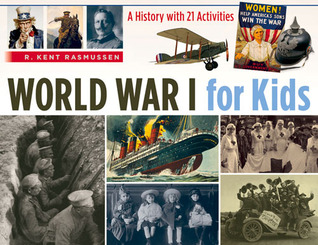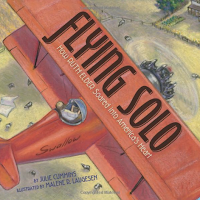Last week, the historian in my house was hustling to finish his current read so that he could begin a book about World War I on June 28, the date 100 years ago when Austrian archduke Franz Ferdinand was assassinated and the domino effect of events leading to the declaration of World War I began.
I was between books as well, so I dove into
World War I for Kids: A History with 21 Activities (For Kids series)
by R. Kent Rasmussen
Chicago Review Press, 2014
review copy provided by the publisher
Just about everything I know about WWI, I learned by reading the graphic novel from the Nathan Hale's Hazardous Tales series,
TREATIES, TRENCHES, MUD, AND BLOOD. In many ways, I liked World War I for kids better.
Hale's book is more of a sequential story of the war, whereas WWI for Kids is more topical. I personally like the topical approach.
Rasmussen begins with a very clear introduction that focuses on WWI as "the most important turning point of the 20th century." He makes the point that "Change is the essence of history..." and suggests that the reader not focus so much on particular battles or on who won or lost the war, but on "
what events were truly significant,
why they happened as they did, and
how they were connected with one another." He also encourages close attention to maps when studying the war. "It is impossible to understand any war without knowing something about its geography." I can imagine reading aloud this entire introduction both as a book hook and because Rasmussen does such a succinct job teaching the reader how to read and learn about history.
I had a hard time with the first two chapters (The Road to War and Stalemate on the Western Front) and chapter 4 (Other Fronts), but the ones that were organized around topics rather than politics and chronologies were fascinating to me. I learned about the horrors of Trench Warfare, the changes of technology in The Weapons of War, The War at Sea and the development of submarines, The War in the Air and the development of airplanes, and the role of animals in Animals Go To War. It was fascinating to learn about how and when the US become involved (Enter the United States), but I lost some of my reading stamina in the chapters The Home Fronts, Ending the Fighting, and Beyond the Armistice. One of the things that kept me going throughout the book were the archival photographs, the maps, and the sidebar information and stories. I think it will be important to share with young readers who are just beginning to tackle longer nonfiction that these variations in preference and stamina are normal.
I imagine that this book, and its companion
World War II for Kids: A History with 21 Activities (For Kids series)
will be very popular in my 5th grade classroom.

























